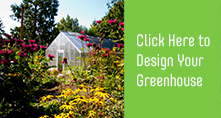|
June is my favorite month to spend time in the garden. It's not sweltering hot yet, plants look unusually fresh and numerous perennials begin to bloom after their deep winter slumber. Many rose species first bloom in June, and those first blooms always seem to be the best. Clematis, iris, peonies and lilies are in their full splendor.
As we work in our gardens, we may not realize the health benefits that we are rewarded with. Read on for tips and information on the physical and mental benefits that gardening offers. We've also featured gardening tips for those who have arthritis and still garden.
Our featured tree seed this month is the Monkey Pod Rain Tree (Samanea saman), a truly spectacular tree easily grown from seed.
For those of you with a greenhouse, why not try growing your own tomatoes this winter? Eliminate trips to the supermarket, control your chemical use and reduce the high winter costs of purchasing many fruits and vegetables. To help you prepare ahead of time, we've got tips on growing tomatoes in your greenhouse.
|
Gardening is a wonderful and relaxing way to exercise, reduces your stress levels, maintain joint flexibility, range of motion and even quality of life. In addition to gardening being a valuable hobby and a way to have fresh vegetables and flowers, gardening as an exercise has many other merits. It is considered a moderate and sometimes strenuous form of exercise that includes stretching and stance, repetition and movement and even resistance principles similar to those used in weight training. Gardening is not stressful to the body as many other forms of exercise can be. Remember to ease into gardening, just as you would with any other exercise. Many gardeners find out the hard way just how much muscle is used by awakening with stiff and sore muscles. It's helpful to stretch before gardening and be sure to use proper techniques for bending and lifting.
It's very difficult to feel stress when you are surrounded by the beauty of nature. Take time to smell the roses and enjoy the beauty of your garden. Consider your garden a positive reflection on yourself, no matter how small or modest your garden is.
Studies have shown that hospital patients exposed to flowers and views of landscape through a window recovered quicker than those who were not. A growing number of experts now say that gardening can hold the key to a long and healthy life!
Horticultural Therapy Programs are springing up across North America, offering rewarding gardening programs for their participants. We'll feature some of these programs in our July Newsletter. Perhaps you can adopt some of these techniques to use in your own backyard.
Greenhouses offer you the ability to garden year round, regardless of the weather conditions outside. You can raise flowers, vegetables, tropical plants, over-winter pond plants or simply create a relaxing winter retreat. It allows you to enjoy the health benefits of gardening all year, rather than just one season.
|
Gardening with arthritis or fibromyalgia can be a challenge, but it does not need to stop you from enjoying your hobby. If at all possible, work during the day that you feel best. Work in shorter time spans more often throughout the day, rather than trying to complete your tasks all at once. Avoid working in the same position for too long, and switch tasks often. Use low maintenance plants such as perennials in hard to reach areas of the garden. Wear gloves to protect your hands from cold temperatures and to cushion your joints against tools.
|
|
At the onset of pain, stop what you are doing and take a rest! Sit back and enjoy the garden, reflecting on the work you've already accomplished. Take it slow and don't overdo it. And, be sure to wear sunscreen as many medications can make you susceptible to sunburn. Weed your garden after it has rained. Weeds are easier to pull with much less resistance.
Gardening is a gentle activity that can help keep your joints and muscles mobile. Work smart, take your time, ask if you need help and most of all, sit back and enjoy the fruits of your labors.
|
Growing Tomatoes in a Greenhouse
|
Most of us are growing tomatoes in our gardens outside during the summer, but why not grow them in our greenhouses during the winter months? You'll be able to plan ahead and order the appropriate seeds to get you started in the fall.
There are certain varieties of tomatoes that should be used in the greenhouse. Varieties that are bred specifically for greenhouse growing are much better than field or garden type tomatoes. Widely used varieties include "Trust", "Match", "Switch" and "Blitz", which are all Dutch hybrids.
You will need to pollinate the plants and ideal conditions are every other day (or about 3 times a week) between 11:00 a.m. and 2:00 p.m. when the relative humidity is at its lowest. Gently shake the plants and look for a small cloud of yellow powder around the flower.
You'll need to rig up a support system or use tomato frames. If you are making one from wire, plan on the wire holding a load of 15 pounds per linear foot.
Ideal greenhouse temperatures will be 70 to 82 degrees F during the day and night temperatures of 62 to 64 degrees F. Maintain a temperature of 64 degrees F and have your thermostat located at blossom height rather than above the tops of the plants.
Not only can we learn from our own mistakes, but the mistakes of others! Rub elbows with local growers, learn what you can and you're off to growing your own fresh tomatoes.
| This magnificent Rain Forest tree can actually be raised indoors in containers! Amazingly, this tree also makes a wonderful bonsai specimen. In the rain forest, the leaves of this plant close up on cloudy days allowing the rain to rush through its leaves. The leaves also go to sleep at the approach of night. This fast growing tree has been introduced to many tropical countries from its native habitats from the Yucatan Peninsula and Guatemala to Peru, Bolivia and Brazil. It has also been naturalized in continental tropical America from Mexico southward, throughout the West Indies, and is also grown in Florida and Hawaii.
Grown mainly as a shade tree, this stunning tree has a large dome shaped canopy with attractive puffs of pink flowers. Easy to grow from seeds, pruning the tree will control its height.
To germinate the seeds, soak the seeds for 24 hours. Plant 1" in potting soil and keep the soil moist. Provide bright light and warmth and the seeds will germinate in 6-24 weeks. It doesn't take long to enjoy this fast growing tree! |
|
|
Don't Forget to Smell the Roses!
|
|
Take some time to smell the roses and enjoy your garden, especially at the end of a hectic or busy day. Gardener's have always known that plants are good for the soul, health experts are just a little slow in catching up to us!
Happy Father's Day to all.
Backyard Greenhouses
1-800-665-2124
| | |
| |
![]() Visit the News page here..
Visit the News page here..







